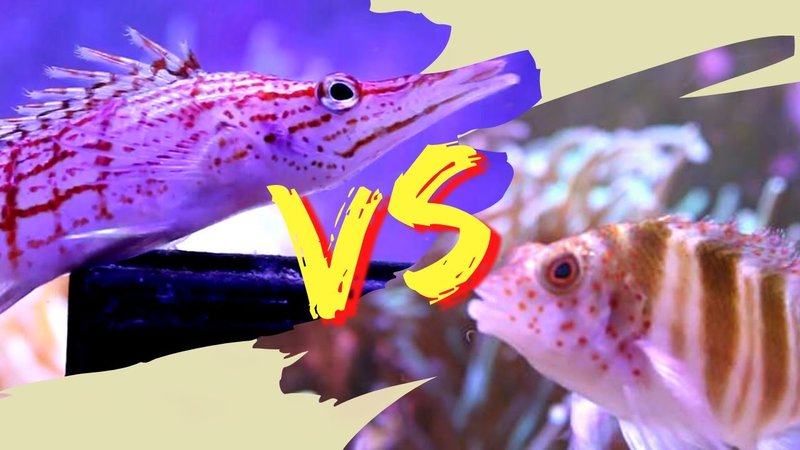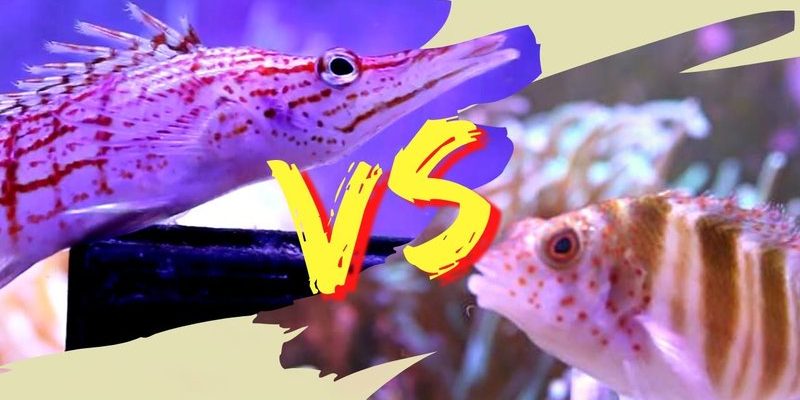
Honestly, feeding hawkfish is like preparing a meal for a picky diner at your favorite restaurant. You want to serve up something nutritious, tasty, and appealing—because who wouldn’t want a well-fed fish? These bold little swimmers primarily feast on small marine life like crustaceans and tiny fish. But let’s dive deeper, explore their feeding habits, and look into some practical guidelines for ensuring your hawkfish gets the best diet possible.
Understanding Hawkfish: A Quick Overview
Hawkfish belong to the family Cirrhitidae and are known for their vibrant colors and unique personalities. You might see them perched on rocks or coral, surveying their surroundings like tiny, watchful sentinels. There’s a wide variety of hawkfish, including the popular Longnose Hawkfish and the Spotfin Hawkfish, each with its own quirks.
These fish are primarily found in warmer waters, often in coral reefs. They have a reputation for being territorial and can be quite bold. This characteristic not only influences their behavior but also plays a role in what they eat. Living in such rich environments means they have a diverse menu to choose from, which is crucial for their health and vitality.
What Hawkfish Eat in the Wild
In their natural habitats, hawkfish are opportunistic feeders. Here’s the thing: they don’t shy away from taking advantage of what’s available. Their diet mainly consists of:
- Small crustaceans – This includes shrimps, crabs, and amphipods, which provide essential proteins and nutrients.
- Small fish – Hawkfish can be surprisingly agile hunters, often targeting young or smaller fish swimming nearby.
- Zooplankton – While not a major part of their diet, these tiny organisms can be an occasional snack.
By consuming a variety of prey, hawkfish help maintain balance in the reef ecosystem. You might be wondering how this translates to feeding them in captivity. Let’s explore that next!
Feeding Hawkfish in an Aquarium
Keeping hawkfish in an aquarium can be a rewarding experience, but feeding them needs a little extra thought. First, it’s important to provide a balanced diet that mimics their natural eating habits.
Hawkfish typically thrive on a mix of high-quality pellets, frozen foods, and live fare. Here are some great options you might consider:
- Marine fish pellets – These are designed specifically for carnivorous fish and are packed with nutrients.
- Frozen foods – Offering frozen shrimp, brine shrimp, and even small fish fillets can entice picky eaters.
- Live food – If you’re feeling adventurous, feeding them live brine shrimp or other small tank-mates can mimic their wild diet.
Remember to vary their diet for optimal health. Just like with our own meals, variety is key!
How Often to Feed Hawkfish
When it comes to feeding schedules, consistency is crucial. You should aim to feed your hawkfish two to three small meals a day. Here’s a simple guideline to keep in mind:
1. Small portions: Only offer what they can consume in about 2-3 minutes to avoid unnecessary waste. This helps keep your tank clean and your fish healthy.
2. Observe behavior: Watch your hawkfish during feeding times. If they seem eager and are actively hunting, that’s a good sign! If they ignore certain foods, you might need to experiment with different brands or types.
3. Avoid overfeeding: Overfeeding can lead to health problems and water quality issues in your aquarium. It’s better to err on the side of caution.
Important Nutritional Considerations
Just like we need a balanced diet, hawkfish also require a mix of nutrients to thrive. When choosing foods, consider the following nutritional components:
- Proteins – Essential for growth and repair, proteins should make up a significant portion of their diet.
- Fats – Healthy fats aid in energy levels and overall vitality.
- Vitamins and minerals – These are crucial for immune system support and general health.
You can often find specially formulated fish foods that include essential vitamins and minerals. It’s worth investing in a quality product to ensure your hawkfish gets all they need to stay vibrant and healthy.
Common Feeding Mistakes to Avoid
Feeding fish might seem simple, but there are a few traps that even experienced aquarists can fall into. Here are some common mistakes to watch out for:
- Sticking to one type of food – As mentioned earlier, variety is key! Relying solely on one food can lead to nutritional deficiencies.
- Not monitoring water quality – Leftover food can quickly pollute the water. Regularly check parameters and do partial water changes to maintain a healthy environment.
- Ignoring aggressive behavior – Hawkfish can be territorial. Be careful when adding new fish to the tank; feeding can heighten aggression.
By keeping an eye on these points, you can help ensure your hawkfish remains a happy and healthy resident in your aquarium.
Feeding hawkfish can be a delightful part of aquarium care. With their vibrant personalities and unique dietary needs, you’re bound to learn a lot along the way. Whether you’re serving up high-quality pellets, frozen favorites, or the occasional treat of live food, remember that variety and portion control are key.
By understanding what hawkfish eat and how to provide the best possible care, you’ll be well on your way to creating a thriving aquatic ecosystem. So next time you’re at the pet store, keep an eye out for these colorful fish and dive into the rewarding adventure of caring for them!

